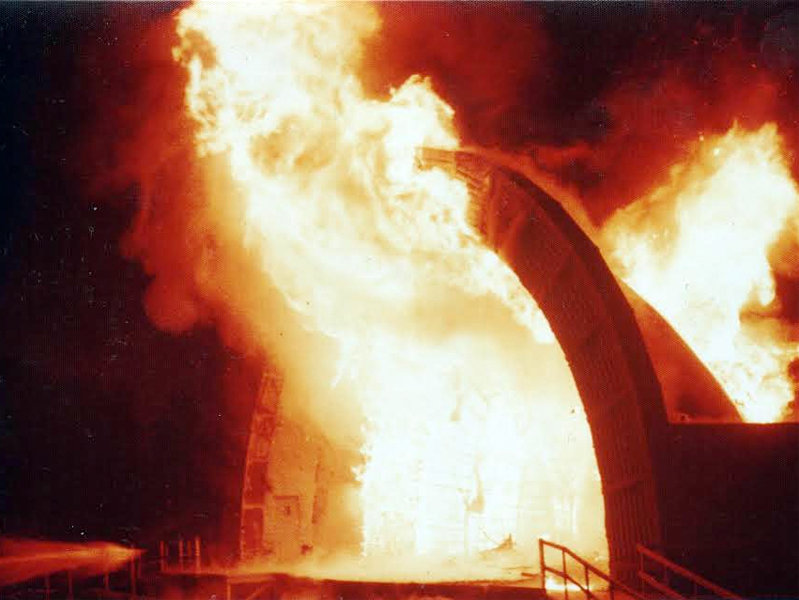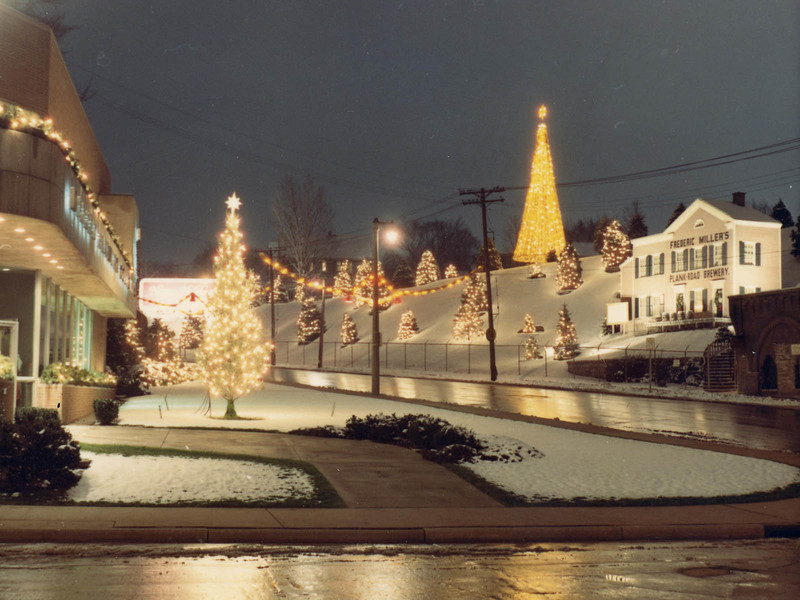Check in early and stay late during OnMilwaukee's "Hotel Week" sponsored by VISIT Milwaukee. These seven days will be packed with stories about historic area hotels, reviews, history, food and drink, staycations and more. Find out what it's like to be a tourist in this town. (Chocolate on your pillow not included.)
In 2016, Milwaukee is talking about expanding its convention center – the size of which has been called inadequate to draw conventions of a certain scale – on a patch of empty land on the southwest corner of 4th and Kilbourn.
Back in 1960, things weren’t much different. In fact, then-Mayor Henry Maier was concerned that the inadequate size of Milwaukee’s convention center was unable to draw conventions of a certain scale. And he wanted to build something to alleviate the problem. On the southwest corner of 4th and Kilbourn.
So, Maier called in local industrial design giant Brooks Stevens (creator of the Wienermobile, Excalibur and the Skytop Lounge, among many others) to design a complex.
"Visualize, across Kilbourn from the Arena, four circular towers each with 19 floors and 256 hotel rooms, a restaurant with a different ethnic theme in each tower dome, a glass enclosed skywalk connecting the four domes, a central core lobby with a banquet room, roof garden, swimming pool, skating pond, sidewalk cafe, rustic beer bar, a fountain facing Kilbourn, a tunnel to the Auditorium-Arena, perhaps a ‘flying saucer’ restaurant on a column on top of the central core."
The Milwaukee Journal could surely visualize it, penning the above description in a 1966 editorial that demanded, "Milwaukee, Make This Exciting ‘Satellite Hotel’ a Reality." But, that clarion call was insufficient and Stevens’ space-age "Jetsons"-style complex, which looked rather like four Martian silos around a central core, went unbuilt, depriving the city of a futuristic structure of landmark proportions.
More than three decades later, Stevens recalled the project in a 1992 op-ed in the morning Sentinel. In it, he remembered that Maier gave him the block facing the Auditorium and Arena to work with and so he designed a convention center (the core) with a hotel and amenities dotted around it (in the silos) and connected with skywalks.
He envisioned street-level shops and offices in the complex and a "sports palace" directly to the west.
"Henry Maier was genuinely enthused about this suggested solution to his all-time dream plan for his city and he referred me to the Common Council for presentation and approval," Stevens remembered.
But Maier’s enthusiasm appeared to have been equaled or outmatched by the council’s lack of interest, Stevens noted.
"I could not understand the the utter disinterest on the part of the Common Council on a matter of this importance to the city. I was finally informed by my attorney that any idea stemming from Mayor Maier was automatically abhorred by the Common Council.
Stevens’ project faced opposition from a parking-lot operator who feared the eight floors of parking in the proposed project, and from nearby hotel owners likewise concerned about their businesses taking a hit.
"All of this became very frustrating and, after spending considerably more than $100,000 on renderings, scaled layout drawings and scale models, I became disenchanted with the attitude and felt that perhaps we had lost the battle. I now read 32 years later in the newspaper of massive ideas for planning or trying to rework the miserable mistake of MECCA (now demolished. -ed.), which I had initially dubbed as warehouse architecture with an early ‘high school gymnasium interior.’"
Rather than upset the Downtown street grid (as we’ve become fond of doing), Stevens suggested a solution much like his Satellite Hotel complex.
"The answer is still to destroy the warehouse and build vertically to obtain 1,000 rooms with convention facilities. But alas, at 81 years of age, I’m not ready to go around again.
"This 1,000-room convention hotel and sports palace complex could have been the focal point of Milwaukee as well as providing millions of dollars worth of convention business and taxes," Stevens concluded in his op-ed. "Had this come to pass, an aerial view of the satellite hotel and sports palace on the cover of Life magazine would have made Milwaukee truly famous."
Instead, it’s 2016 and we’re still having the same conversation.
Born in Brooklyn, N.Y., where he lived until he was 17, Bobby received his BA-Mass Communications from UWM in 1989 and has lived in Walker's Point, Bay View, Enderis Park, South Milwaukee and on the East Side.
He has published three non-fiction books in Italy – including one about an event in Milwaukee history, which was published in the U.S. in autumn 2010. Four more books, all about Milwaukee, have been published by The History Press.
With his most recent band, The Yell Leaders, Bobby released four LPs and had a songs featured in episodes of TV's "Party of Five" and "Dawson's Creek," and films in Japan, South America and the U.S. The Yell Leaders were named the best unsigned band in their region by VH-1 as part of its Rock Across America 1998 Tour. Most recently, the band contributed tracks to a UK vinyl/CD tribute to the Redskins and collaborated on a track with Italian novelist Enrico Remmert.
He's produced three installments of the "OMCD" series of local music compilations for OnMilwaukee.com and in 2007 produced a CD of Italian music and poetry.
In 2005, he was awarded the City of Asti's (Italy) Journalism Prize for his work focusing on that area. He has also won awards from the Milwaukee Press Club.
He has be heard on 88Nine Radio Milwaukee talking about his "Urban Spelunking" series of stories, in that station's most popular podcast.







